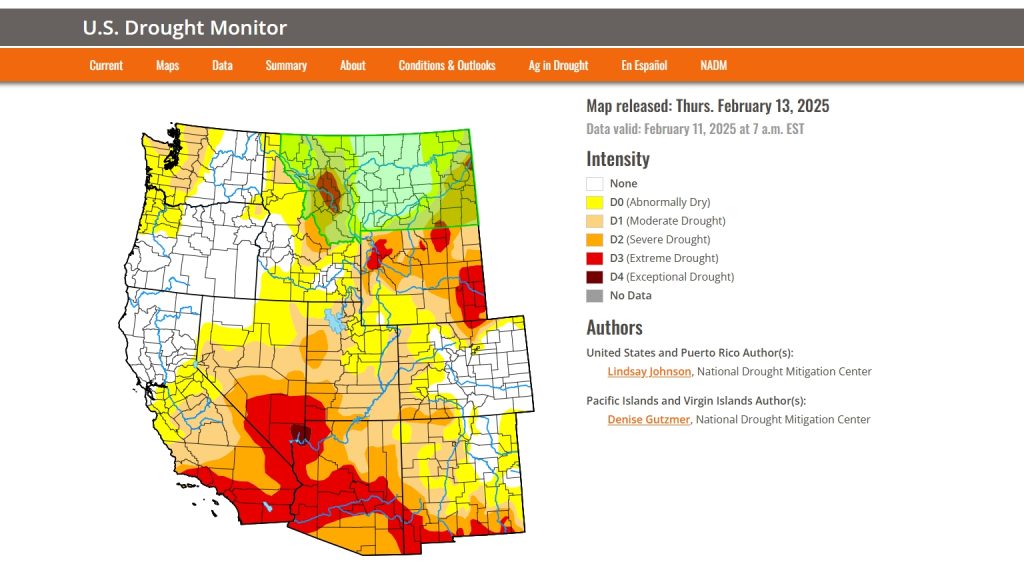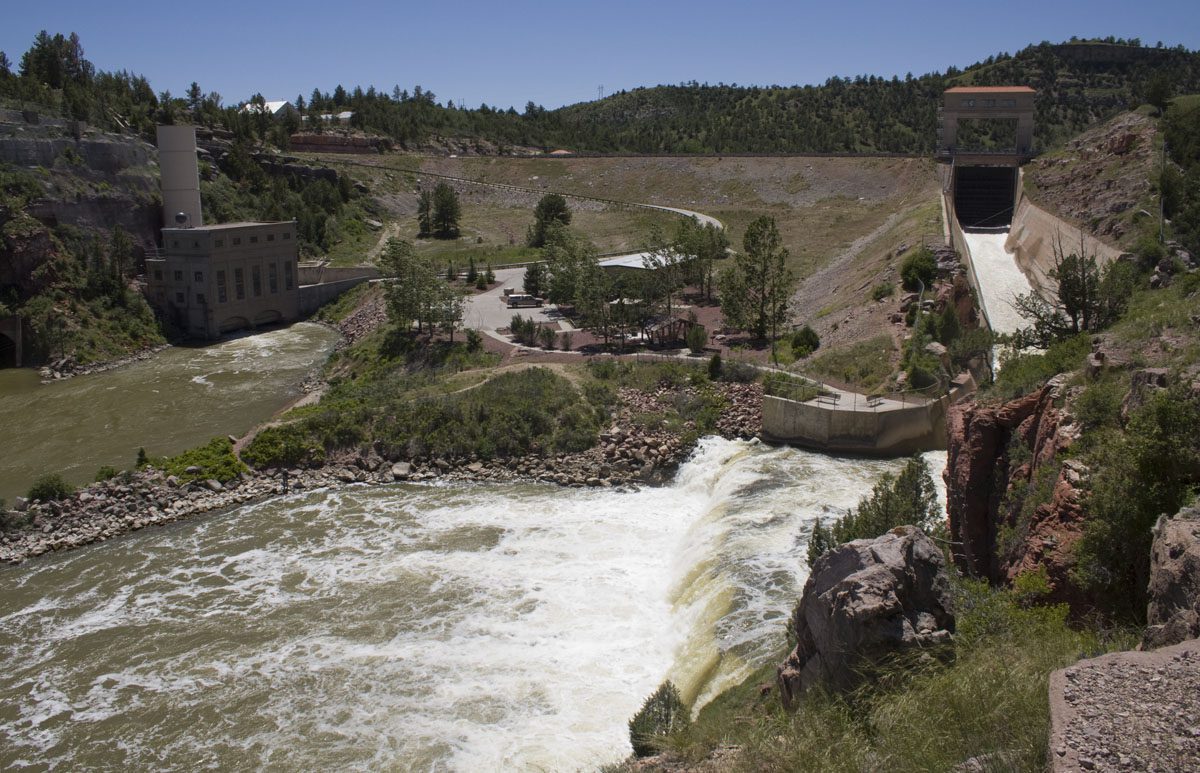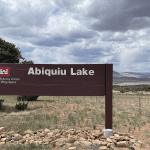- Snowmelt runoff in the North Platte River Basin is projected to be 75% of average.
- Drought conditions are worsening across Colorado and the Four Corners region.
- Reservoir levels remain below normal in Wyoming, affecting water supply and hydropower.
- Limited precipitation is expected in key Western states over the next week.
February 17, 2025 — The latest water forecasts paint a concerning picture for the Colorado River Basin states. Snowpack levels in crucial areas remain below normal, while drought conditions continue to tighten their grip across the region. Reservoir storage, a key indicator of water availability, also reflects a below-average trend. With minimal relief expected in the near term, water managers and communities reliant on the river system are bracing for challenges ahead.
North Platte River Basin Faces Below-Average Runoff.
According to the U.S. Bureau of Reclamation’s February report, spring snowmelt runoff in the North Platte River Basin is projected to reach 700,000 acre-feet between April and July—just 75% of the 30-year average. As of January 31, 2025, storage in the North Platte Reservoir System stood at 1.52 million acre-feet, which is 92% of the long-term average.
Current releases from the reservoirs are as follows:
- Seminoe Reservoir: 530 cubic feet per second (cfs) through the Miracle Mile
- Gray Reef Reservoir: 500 cfs
- Glendo Reservoir: 0 cfs
- Guernsey Reservoir: No releases
Reservoir releases are expected to fluctuate throughout the spring and summer months. Seminoe Reservoir, a critical water source, currently releases 530 cubic feet per second (cfs), with projections showing potential peak releases of 2,600 cfs by early summer. Meanwhile, Pathfinder Reservoir is not expected to spill this year, indicating that water levels may remain constrained. The U.S. Bureau of Reclamation does not anticipate water allocations for North Platte Project contractors this season, highlighting potential agricultural water supply concerns.
The North Platte Reservoir system is a critical component of regional water management, supplying irrigation to hundreds of thousands of acres and generating electricity through six hydroelectric plants.


Drought Intensifies Across Colorado and the Southwest.
The latest U.S. Drought Monitor report , released on February 13, 2025, reveals worsening drought conditions across much of the Colorado River Basin. The western slope of Colorado, including the San Juan region, has seen continued drought degradation. Soil moisture and streamflows remain below normal, exacerbating concerns over water availability.
, released on February 13, 2025, reveals worsening drought conditions across much of the Colorado River Basin. The western slope of Colorado, including the San Juan region, has seen continued drought degradation. Soil moisture and streamflows remain below normal, exacerbating concerns over water availability.
The Four Corners region, encompassing portions of Arizona, Utah, Colorado, and New Mexico, is experiencing below-normal snowpack, further straining local water supplies. Despite some recent snowfall in parts of Idaho and Montana, overall moisture deficits persist, particularly in the High Plains, where western Nebraska and Kansas are also seeing prolonged dryness.
Limited Precipitation in the Forecast.
Looking ahead, limited relief is expected in the coming days. The western U.S. may see some precipitation in higher elevations, but widespread improvements are unlikely. The 6-to-10-day outlook suggests that parts of the West, including California’s central and southern coast, Arizona, and New Mexico, are likely to experience drier-than-normal conditions. Meanwhile, southern Arizona is expected to maintain near-normal temperatures.
While the Gulf Coast and southeastern U.S. are forecasted to receive significant precipitation, the central and western regions that rely on the Colorado River Basin are not expected to see meaningful moisture gains. As the region enters the crucial late-winter and early-spring months, water managers will be closely monitoring snowpack levels and reservoir conditions to determine how water supplies will fare in the months ahead.
Top Image:
Guernsey Dam , on the North Platte River above Guernsey, Wyoming. Public domain, USBR.
, on the North Platte River above Guernsey, Wyoming. Public domain, USBR.




Leave a Reply